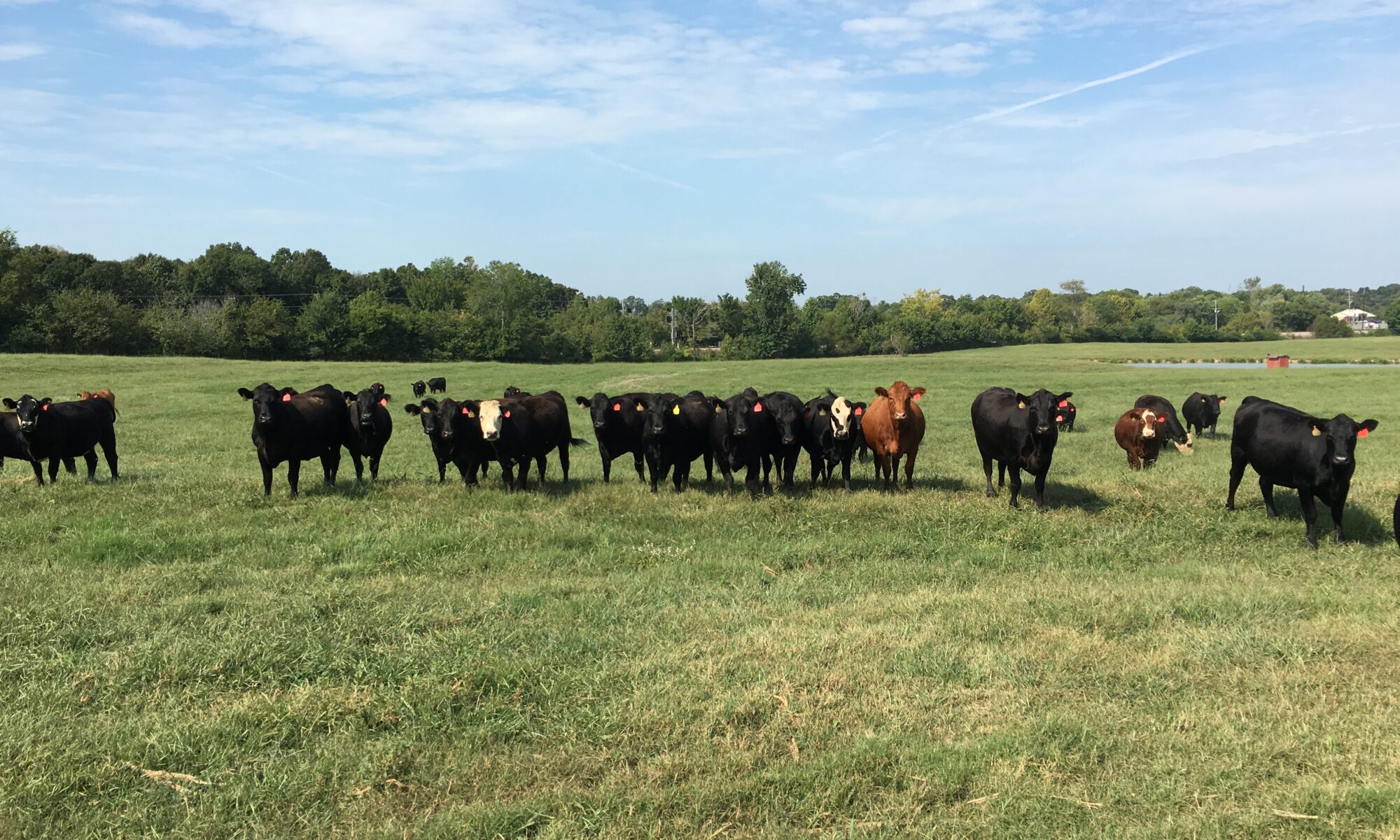

Dr. Andrew Griffith
Assistant Professor
Department of Agricultural and Resource Economics
P: 865-974-7480
The cattle and beef industry are marked by several “things” during the summer. For instance, by the time this article finds its way to mailboxes or computer screens, most cattle producers will have harvested their first cutting of hay and may or may not be concerned about drought issues. Similarly, on the beef front, the grilling season should be in full swing or as full of a swing as it is going to be this year.
The aforementioned summer things should not be overlooked or undervalued, but there are some other things producers can influence that are also important during the summer. The first is providing a health and nutrition program to the spring calf crop. It is important to ensure the calf crop that is on the ground grows efficiently, and they can only do that if they are healthy. These two management practices will also increase calf value when fall marketing arrives, which brings the conversation to marketing. Producers should be well along in evaluating their marketing decisions for the 2024 calf crop, but they should also be thinking about the 2025 calf crop since many producers have bulls turned out with cows at this point.
With this thought in mind, it is obvious cattle producers are almost always in the marketing process of two calf crops at the same time. However, this year may be slightly more important given cattle price levels. Why is it more important this year than many other years one may ask? The reason hinges on marketing females. It can be difficult to decide to retain a heifer calf when cattle prices are high, because the decision to retain such a female is the same as buying her for what she would be worth if sold. This simply results in breeding females being more expensive in the current environment than in years when calf prices are much lower.
Staying on the subject of replacement females, producers with a desire to expand their cow herds must consider retaining females from the calf crop, purchasing bred heifers or bred cows, or purchasing females to breed. By this time in the game, purchasing females to breed to calve in the spring would put one behind the eight ball, but it does not mean it is a bad decision because a mature heifer bred today will produce a calf that can be marketed in the fall of 2025. The problem with retaining a heifer calf this fall from the current calf crop is that it will not have a marketable calf until the fall of 2026.
The other alternatives, purchasing bred heifers or cows, tend to be a little more capital intensive on the front end as they will likely require a few more dollars to place in the herd. However, they will likely be bred to calve earlier than any animal exposed to a bull from this point forward. Some additional benefits are they are confirmed bred at time of purchase and they will provide a quicker return on the investment than retained calves, and will likely produce heavier calves than late bred females.
As one can easily see, there is a lot going on for cattle producers during the summer months, and it is imperative produces are making management decisions related to their business that influence the bottom line. There is not a one size fits all to any of these decisions, but producers need to do their homework to determine which decision fits their operation best.
A few random “things” concerning the cattle business that should be noted is the cancellation of USDA’s mid-year cattle inventory report. This report was cancelled for July 1, 2024 due to a reduction in funding. The loss of this report is important in that it provides a first look at the calf crop, and the loss may be even more important given the expectation that expansion of the cattle herd should begin this year. Another thing to note is declining beef exports and increasing beef imports. At the time of this writing, it is impossible to know how the summer will shape up from a total quantity and value standpoint, but the trend of declining exports and increasing imports is almost guaranteed. Lastly, maybe the Braves will be hitting the baseball by the time this is published.